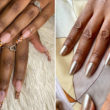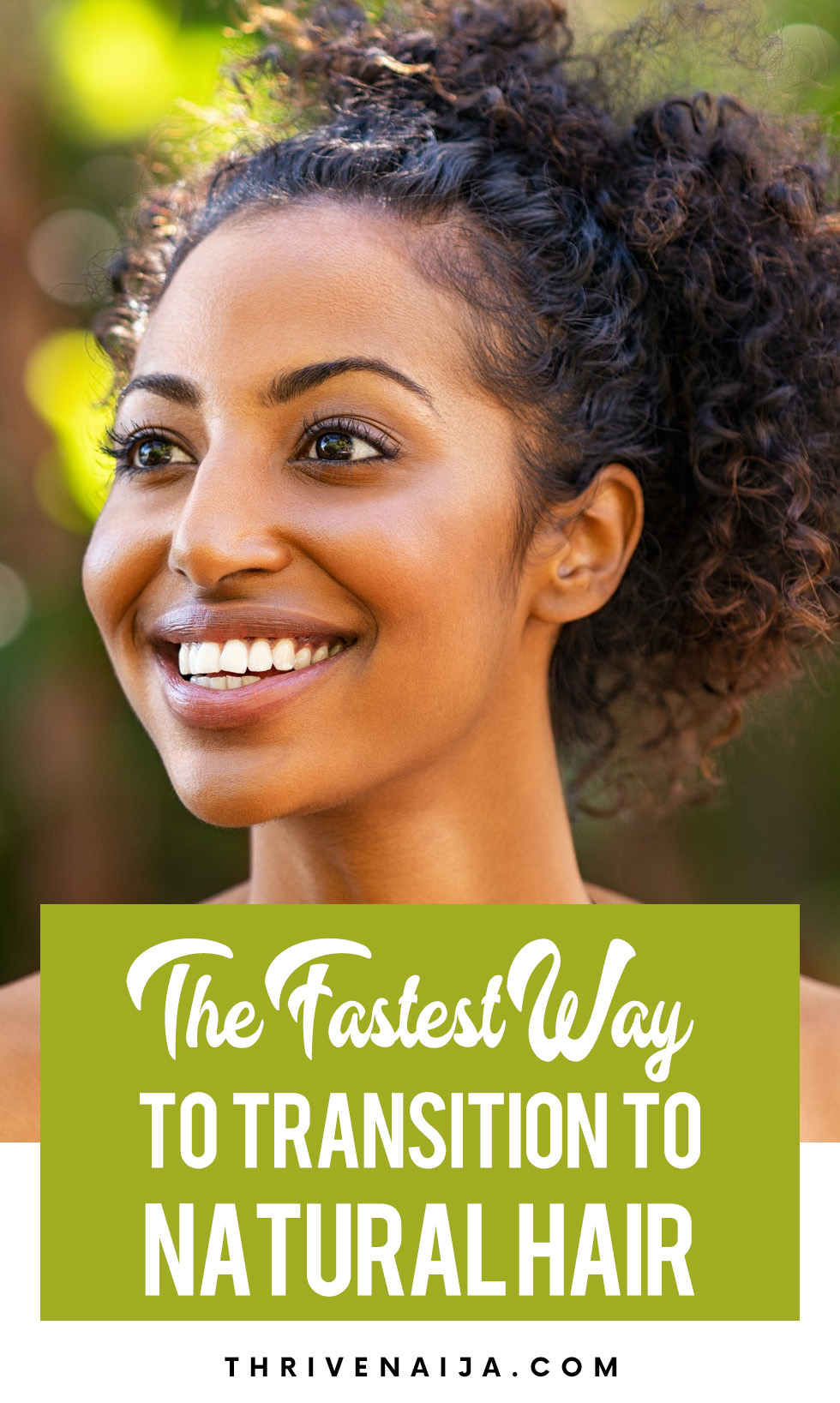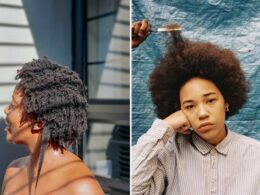How do I go natural with the big chop? Transitioning to natural hair is the simple process of growing out your natural hair texture before cutting off the relaxed part and it’s not the fastest way to go natural but it’s the only way you can retain your hair length while going natural. Transitioning to natural hair can a bit challenging however they are lots of great products that can help you heal and repair damaged locks while you grow out your hair.
If you are considering transitioning, how you go about transitioning depends on your natural curl type, your end goal for transitioning and length, there are things you have to let go while transitioning like no flat irons or chemical, all it needs is lot’s of care and love to keep it healthy.
The goal of transitioning is to retain your hair length when the transition is complete and many naturalists still find a fast way to do this. This article contains the fastest way to transition to natural hair and how to care for it while transitioning.
Fast Steps to Transitioning to Natural Hair
Transitioning to natural hair has many benefits and one of which includes fewer visits to the salon and also fewer damages to your hair however transition takes time, care, and maintenance but with some patience, you can get to have the hair you want. We listed some of the fast steps to transitioning to natural hair with fewer damages on your hair strand.
Ask For Help
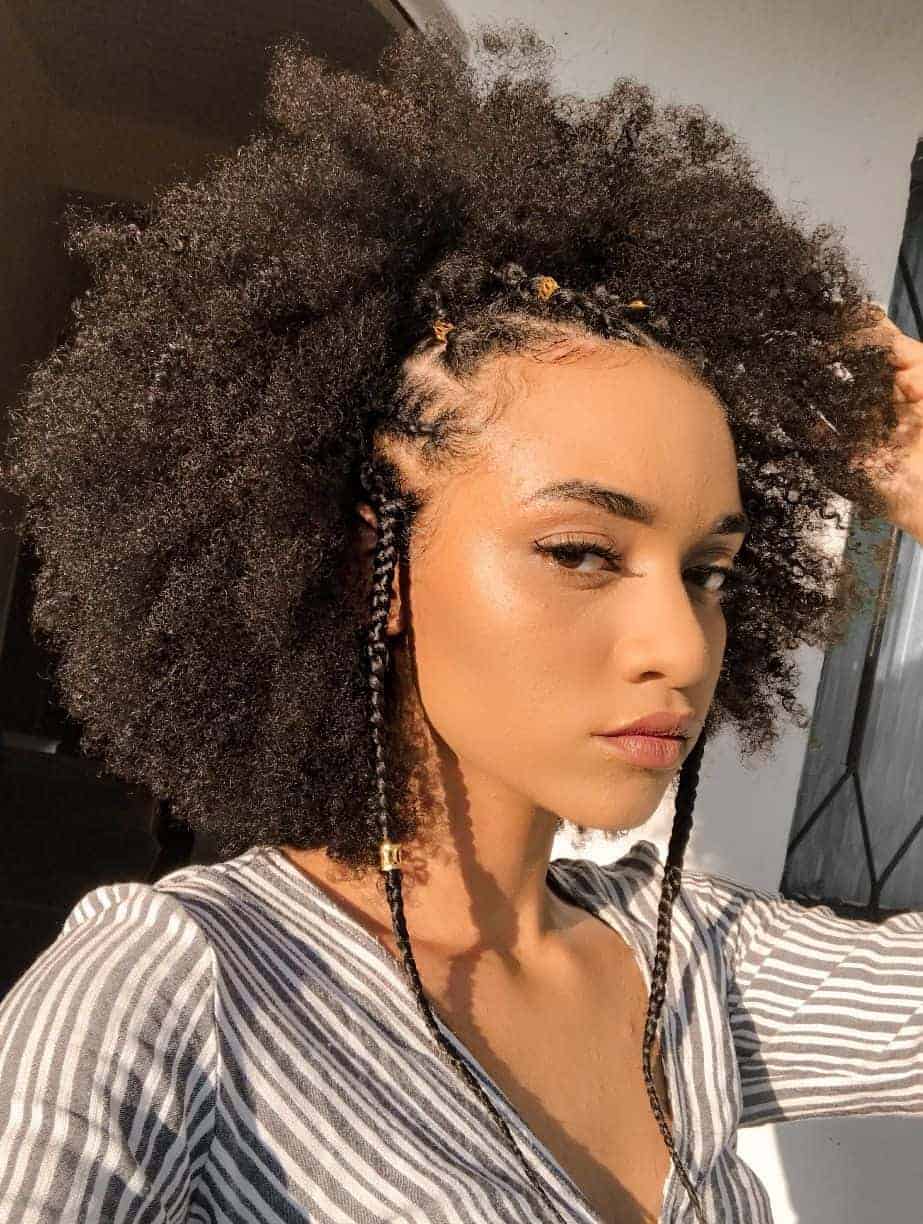
Once you decide to transition to natural hair, the first step is to consult your natural hair stylist and specialist to give you invaluable advice on how to maintain and keep your hair healthy while you transition. This is also very important if you plan to cut the rest of your relaxed hair away after few months of transitioning and you will be aware of the styles which are suitable for your multi-textured hair.
Be Patient And Plan Ahead
Decide ahead of time if you plan to trim your hair as you grow it out or you plan to chop it all off after growing an inch of natural hair, you need to also set aside more time in your day for hair care. Natural hair requires extra care compared to other hair texture, it requires time to moisturize, detangle and style. Create a plan ahead of time so you can mentally and financially prepare for your transition.
Find Out What Problem Your Hair Currently Has
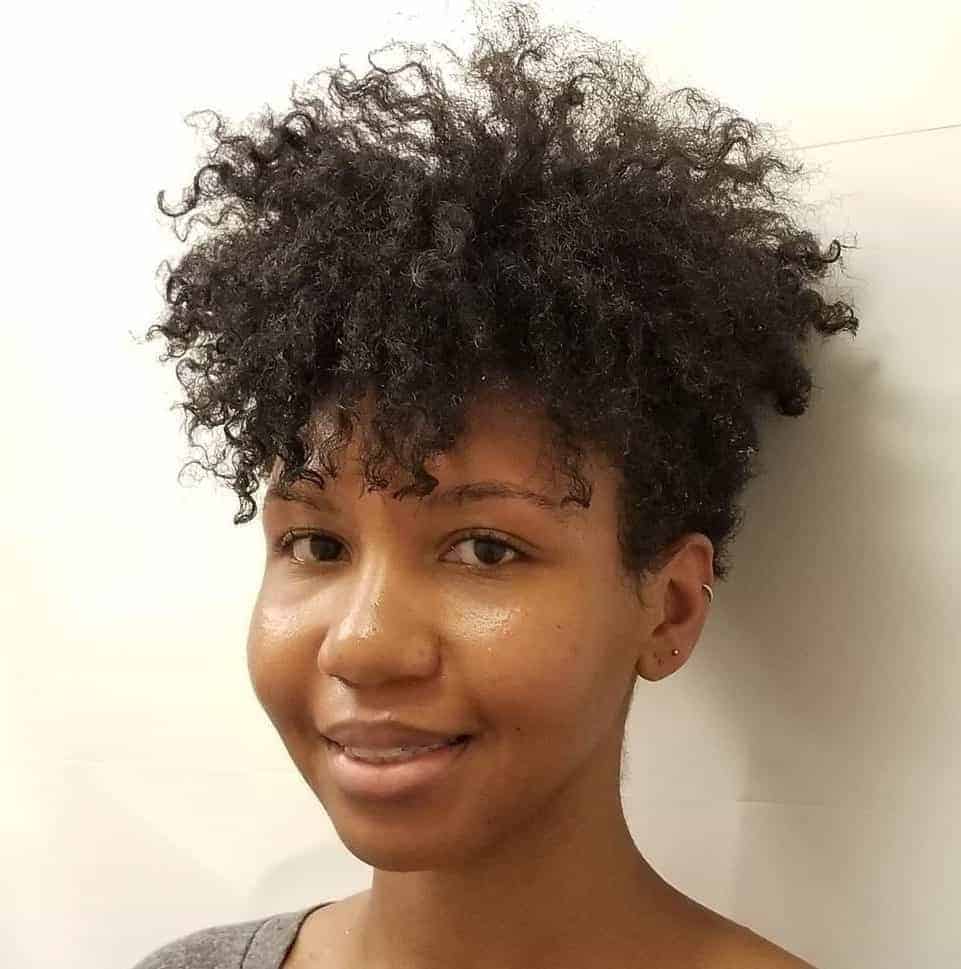
You will have an easier transitioning time if you identify the problem your current hair texture has. Hair damage is one of the reasons why people decide to transition back to their natural hair hence it is important to know the state of your hair, this will help you know what step you need to take next in your hair journey. You may need to get a major hair cut if it’s serious hair damage or just regular deep conditioning and moisturizing to get it on track.
Moisturize Your Hair
Another important thing to consider when transitioning is to properly moisturize, naturally curly hair requires lots of moisture to stay healthy, and maintaining moisture with natural hair also prevents breakage. Your hair needs the vitamin and nourishments to lock-in moisture.
Embrace Your Curls

Embrace your natural hair journey, natural hair transition requires lots of patient and time. It is easy to look at other fully grown natural hair of women in magazines or in Instagram and wish your natural hair look like that however natural hair comes in different range, texture, and color and these differences make natural hair more unique and exciting.
Explore Hairstyles
One of the fastest ways to grow out your natural hair texture is to explore protective hairstyles, you can easily neglect your transitioning hair by putting it in protective styles for an extended period of time, this allows you to give your hair some time to breathe and grow. Wear protective hairstyles like a cornrow, twists, weaves, Bantu knot, or extension and you can also dress it up with headband, scarf, or clip.
Trim Your Ends Often
Trim your ends often, this will help your transition to natural hair go more smoothly and faster. You can also reduce the number of damages you face when transitioning if you trim often, this is a great way to avoid breakage as well. Keep up to regular trims every four to six weeks to keep your hair growing longer and achieve your natural hair texture faster as well.
Maintain A Healthy Hair Diet
It is important to adopt a healthy diet when transitioning and when you get that beautiful natural hair you want. Increase your hair budget and invest in great products, which means trying out lots of hair care products and finding which one works for your hair type. Here are simple ways to maintain a healthy hair diet.
- Stimulate your scalp with a massage
- Don’t wash your hair every day
- Do weekly deep conditioning treatment
- Be consistent with healthy habits
- Invest in great products
- Limit heat styling
- Focus on nutrition and make sure to limit all foods that don’t provide you with essential vitamins
- Protect your hair at night by wrapping in a silk or satin scarf
Going natural is not an easy feat which is why it’s essential to plan ahead and be patient as it could take months or even years to transition completely to natural hair.
Final Thoughts
If you are planning to grow out your natural hair texture without the big chop, make sure to follow the growths with products that will nourish and replenish your hair. Moisture is the most important thing to do your natural hair, it keeps it hydrated and prevents breakage. Natural hairstylists also advised wearing your hair down in its natural state while transitioning to minimize shedding.
Read more on natural hair transitioning and protective hairstyles:
- What Is 2c Curly Hair? 15 Style Ideas For 2c Curly Hair
- Why Is My Natural Hair So Dry?
- When to Shampoo Natural Hair?
- 7 Challenges That Comes With Keeping Natural Hair
- 10 Natural Hair Care Tips You Need In Your Life Right Now
- What Is Protective Styling For Natural Hair?
- 15 3a Hair Style Ideas; Cause You Are Looking
- How To Transition Your Relaxed Hair Into Natural Hair


